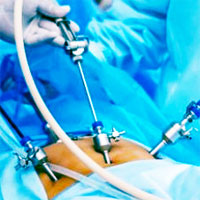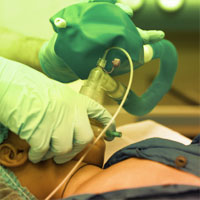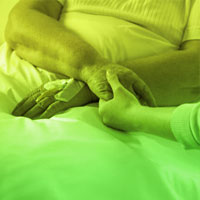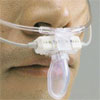Tag: sedation

Obese Have Less Respiratory Insufficiency Than Nonobese During Endoscopy
Obese patients showed less respiratory insufficiency (RI) than their nonobese counterparts during endoscopic surgery, according to a new study. The result was counterintuitive. Because of their higher rates of obstructive... read more

New Study: Economic Cost to Surviving ARDS
Research published today in the American Journal of Respiratory and Critical Care Medicine sheds light on the economic toll on survivors of acute respiratory distress syndrome. Nearly 50% of survivors who worked before they... read more

FDA Approves Label Changes for Pediatric General Anesthetic and Sedation Drugs
The FDA has approved labeling changes regarding the use of general anesthetic and sedation medicines in children younger than 3 years. General anesthetic and sedation drugs are necessary for patients, including young children... read more

Rocketamine vs. Keturonium for Rapid Sequence Intubation
Airway management is a detail-oriented sport. Minor nuances of patient positioning can be essential. Or gentle laryngeal manipulation. Apneic oxygenation can improve first-pass success. Placing the pulse oximeter on the... read more

The Confusion Assessment Method for the ICU-7 Delirium Severity Scale
Delirium severity is independently associated with longer hospital stays, nursing home placement, and death in patients outside the ICU. Delirium severity in the ICU is not routinely measured because the available instruments... read more

The association of sleep quality, delirium, and sedation status with daily participation in physical therapy in the ICU
Poor sleep is common in the ICU setting and may represent a modifiable risk factor for patient participation in ICU-based physical therapy (PT) interventions. This study evaluates the association of perceived sleep quality,... read more

Factors influencing physical activity and rehabilitation in survivors of critical illness
Eighty-nine papers were included. Five major themes and 28 sub-themes were identified, encompassing: (1) patient physical and psychological capability to perform physical activity, including delirium, sedation, illness severity,... read more

Tips Offered for Deep Propofol Sedation And Aspiration in Non-OR Settings
With exponential growth in the number of procedures being done under anesthesia, especially in the gastrointestinal suite, providers are wondering about the best way to provide safe, efficient and affordable care but also... read more

Capnography best practices to improve patient handoff reports
Use these documentation and handoff tips to communicate important patient information to ED and ICU staff unfamiliar with capnography. Waveform capnography is an example of EMS as an early adopter of emerging technology.... read more









